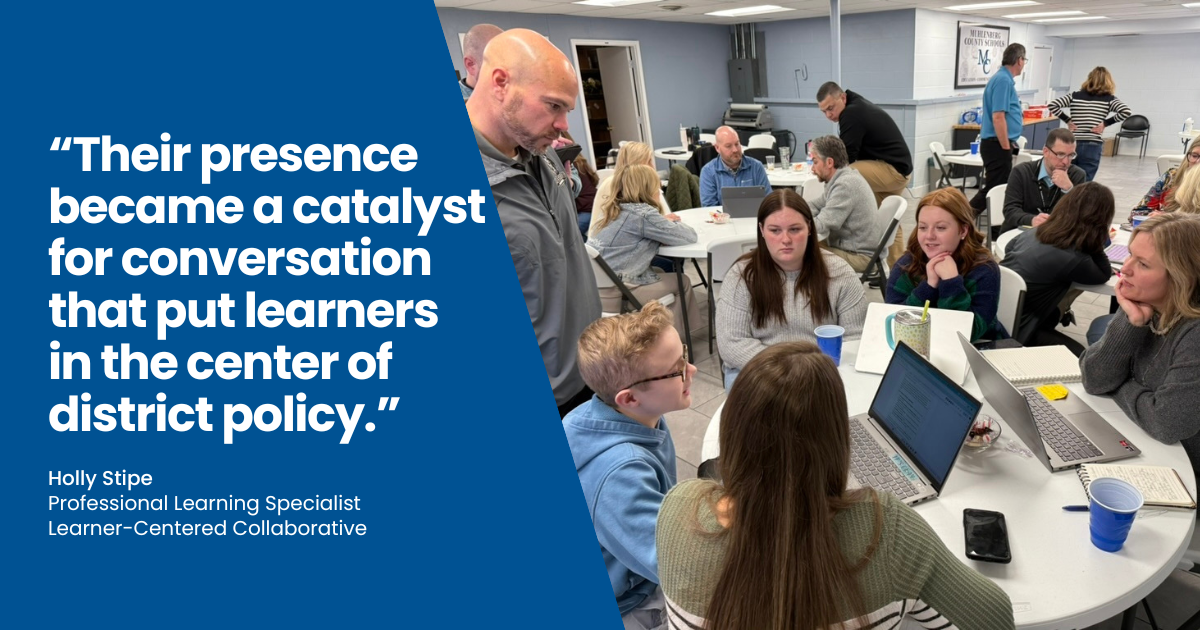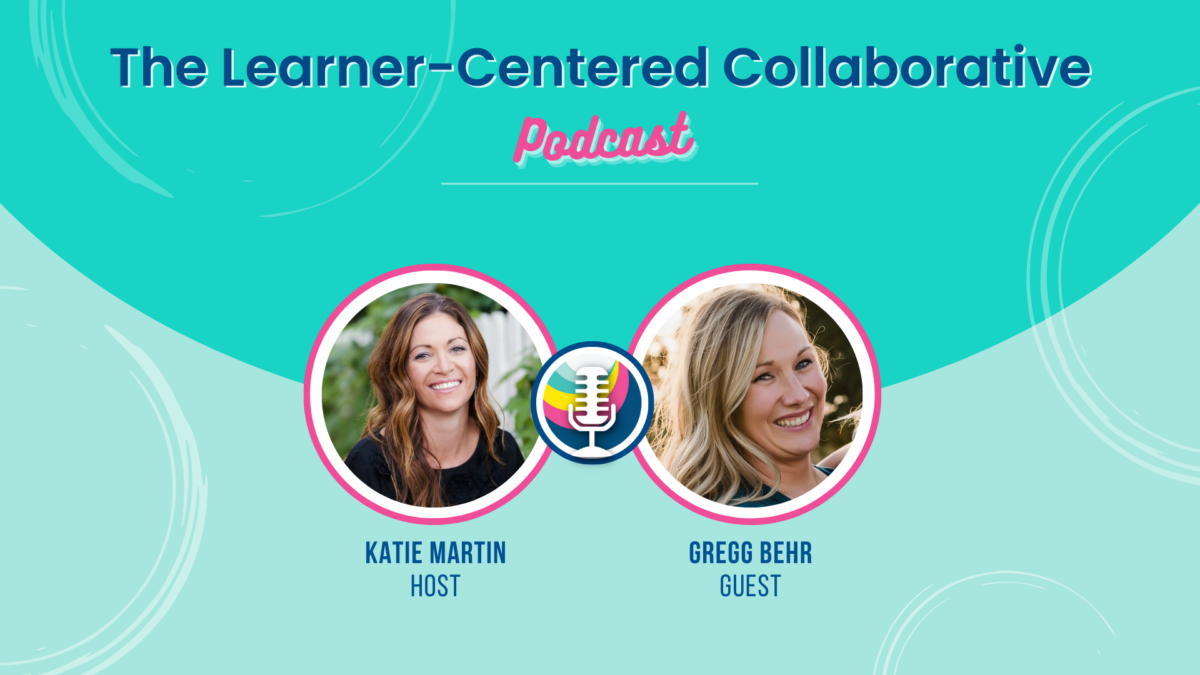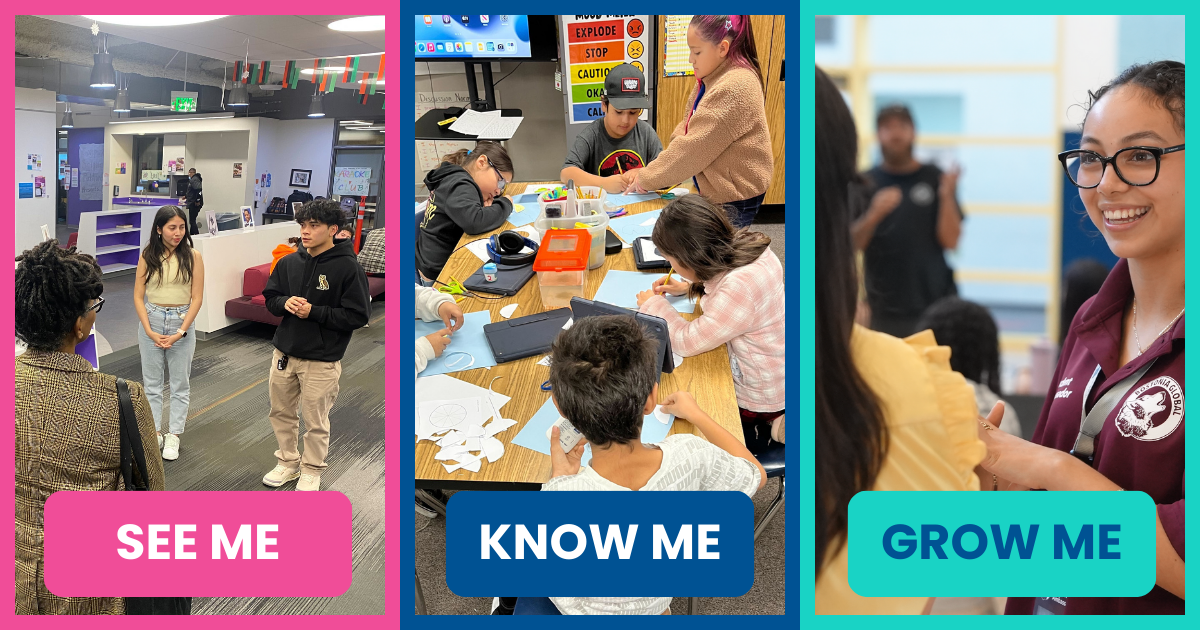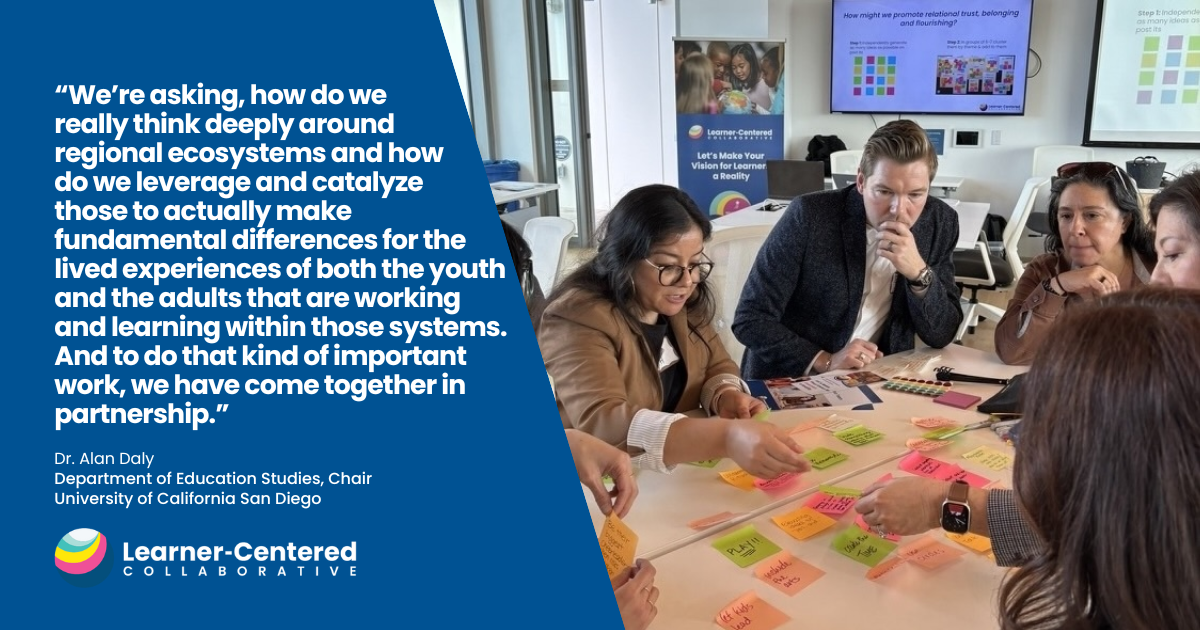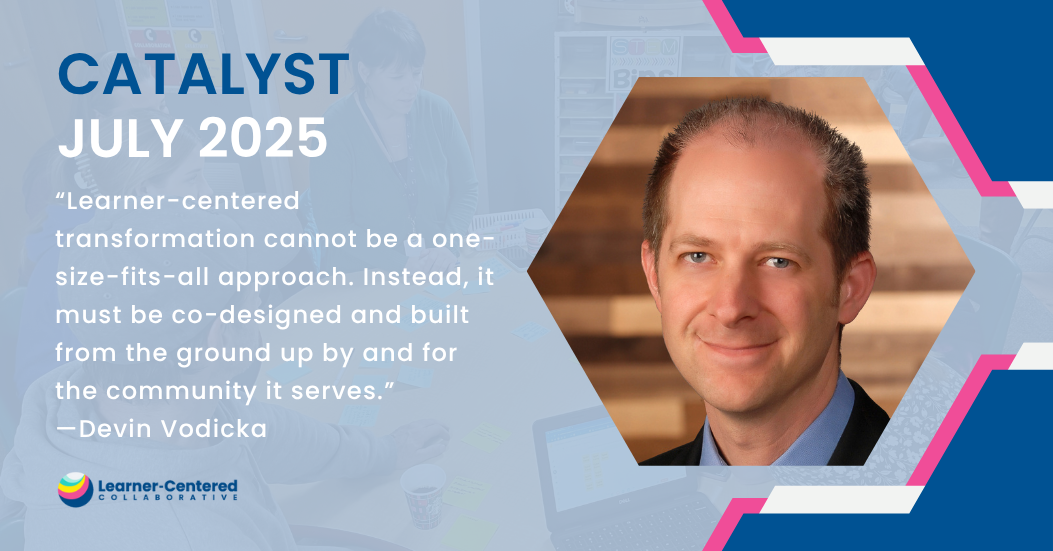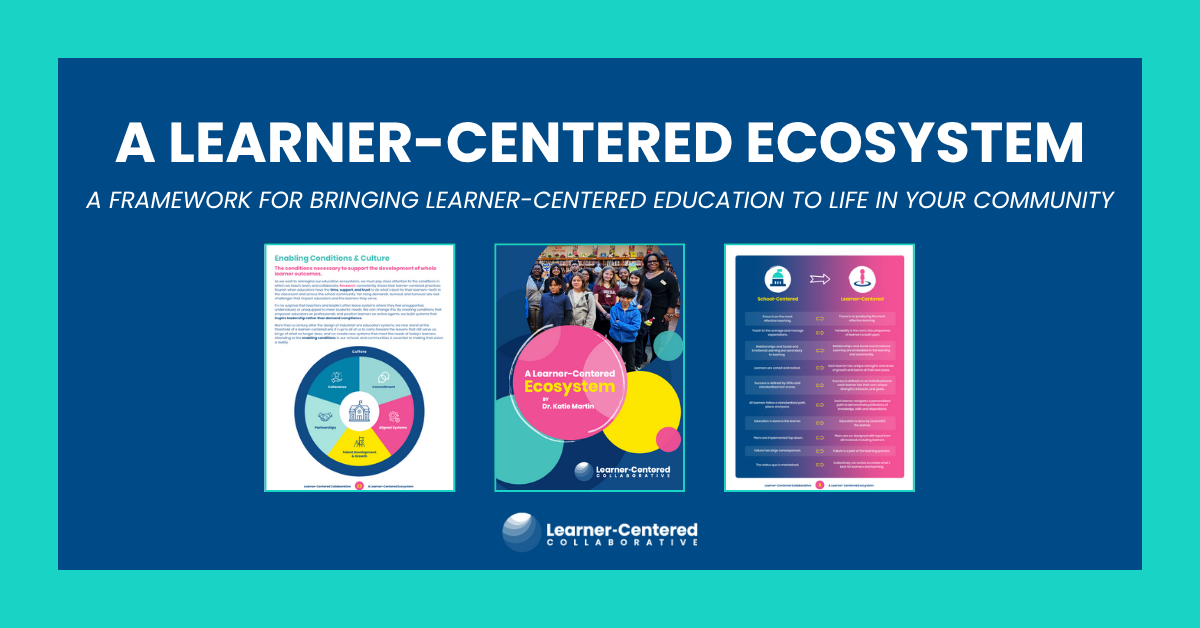5 Ways to Drive Learner Agency with Goal-Setting
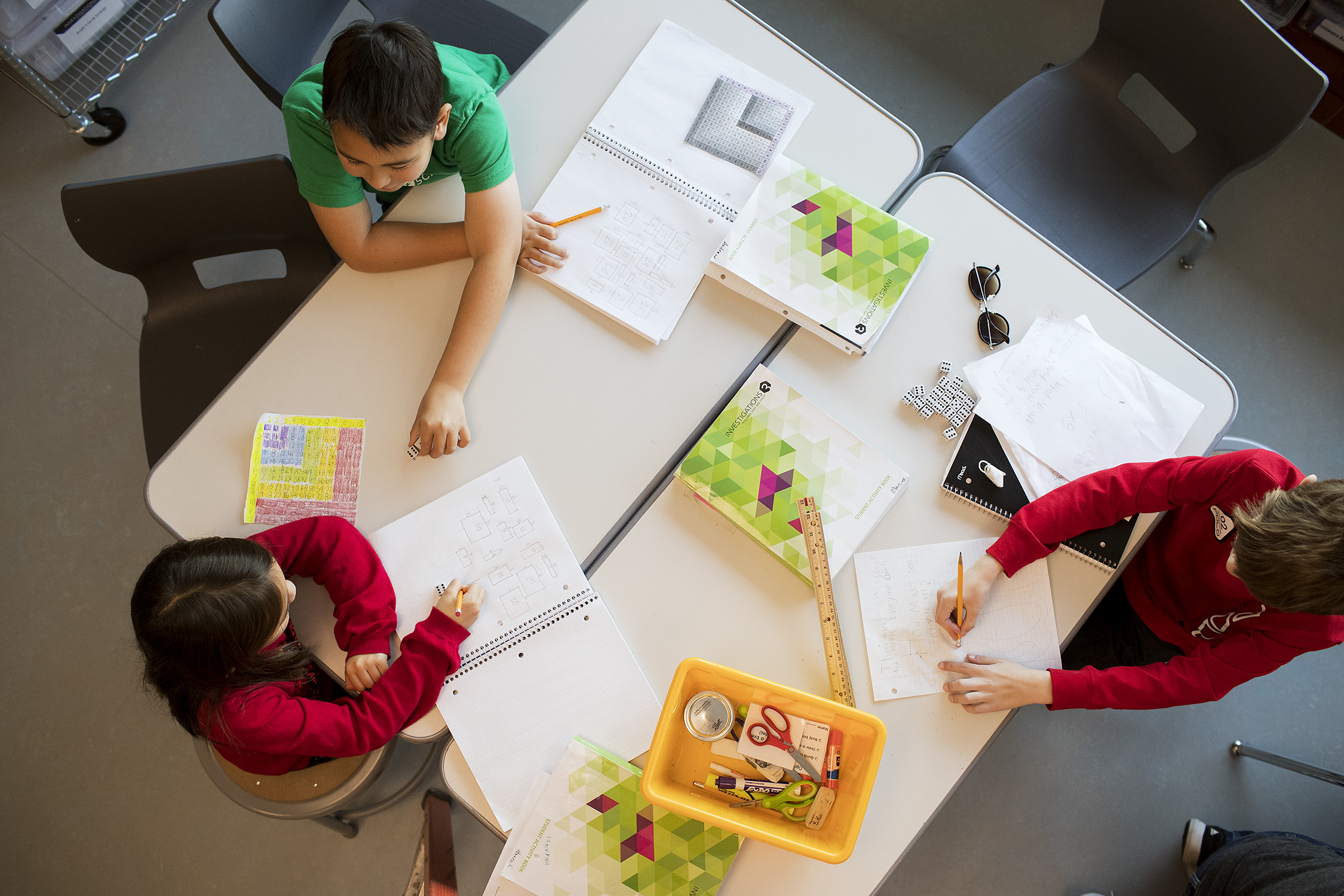
1. Establish a foundation by focusing on learning over performance.
Foundational work is essential to creating learning environments that enable effective goal-setting. Conference with your learners and give them the opportunity to identify and explain where they are now, determine where they want to be, and begin thinking about how they want to get there. Establish an environment of safety, reflection, and support early on to enable learners to take risks, think critically, and know that failures are valuable learning experiences. Prompt learners to feel more in control of their learning by encouraging them to set learning goals rather than performance goals. Learning and growth are the goal, not the outcome. An example of an outcome-based goal could be “I will get a 100% on the test” whereas the learning-focused goal could be “I will be able to solve quadratic equations”. This shift in focus is important for fostering a growth mindset.2. Provide goal-setting structures that enable students to set their own goals.
Once learners have a sense of where they are and understand that you’ll provide guidance and support, they can begin setting goals. For learners to develop agency, they need to be able to internalize their current status and drive the learning process forward themselves by setting their own goals. Utilize SMART (Specific, Measurable, Achievable, Relevant, Time bound), WOOP (Wish, Outcome, Obstacle, Plan)or other frameworks to structure the goal and facilitate student ownership. One effective way to structure and visualize goals with students: Allow them to choose a goal and its competency-based objectives, articulate what the goal is and means to them, identify some ways they can achieve it, and set a timeline for achieving the goal.3. Capture learning moments and pause to reflect regularly.
Capturing evidence of progress and learning is essential to monitoring progress around goals. It’s important to identify successes, roadblocks, and learning opportunities, and help learners reflect throughout the process. We want to create space for learners to take a meaningful look at every stage of learning (not just when the learning experience is completed), taking stock and identifying opportunities to look at the problem from a different lens, and finding opportunities to pivot if necessary.This will continue to emphasize learning and growth over product and outcome. Set aside time throughout the school year and specific learning experiences or projects for reflection on goals. This might look like a 15 min block of dedicated time every Friday where learners reflect and set their goals for the next week, like this 3rd grade teacher, or something you build in depending on the context of the unit or project. However you decide to make time, it’s important that goals are revisited, reflected on and adjusted frequently.
4. Cultivate a self-reflection mindset.
Although dedicating time for checking in, allowing self-reflection time, and scheduling feedback opportunities from you and peers (daily or weekly) is important, the ultimate goal is to nurture a self-reflection mindset. Teach learners the process of reflection and let it pervade every aspect of their progress. Self-reflection is a continual process that empowers constant awareness, action, and iteration. You can provide learners with self-reflection prompts and protocols that can support this process as they grow this skill.5. Celebrate: make goals & progress visible
Reflection is a key metacognitive skill that supports making progress towards goals, but it’s also important to celebrate! These celebrations are authentic ways to recognize progress as well as accomplishment and are different than traditional reward systems. Have learners post their goals on the walls or display them in some way. Then they can track progress towards those goals because we want to celebrate even the small wins. Once a goal is accomplished, it should also be celebrated before asking learners to reflect and start the goal-setting process all over again for a new goal. This elementary teacher gives students “I met my goal” lanyards and they have a celebration station in the classroom to visibly display met goals. Learners can also celebrate by sharing their goals in student-led conferences or through exhibitions of learning.Interested in creating effective goal-setting and reflecting routines in your learning environment? Join us in our Develop Learner Agency course to learn more.
